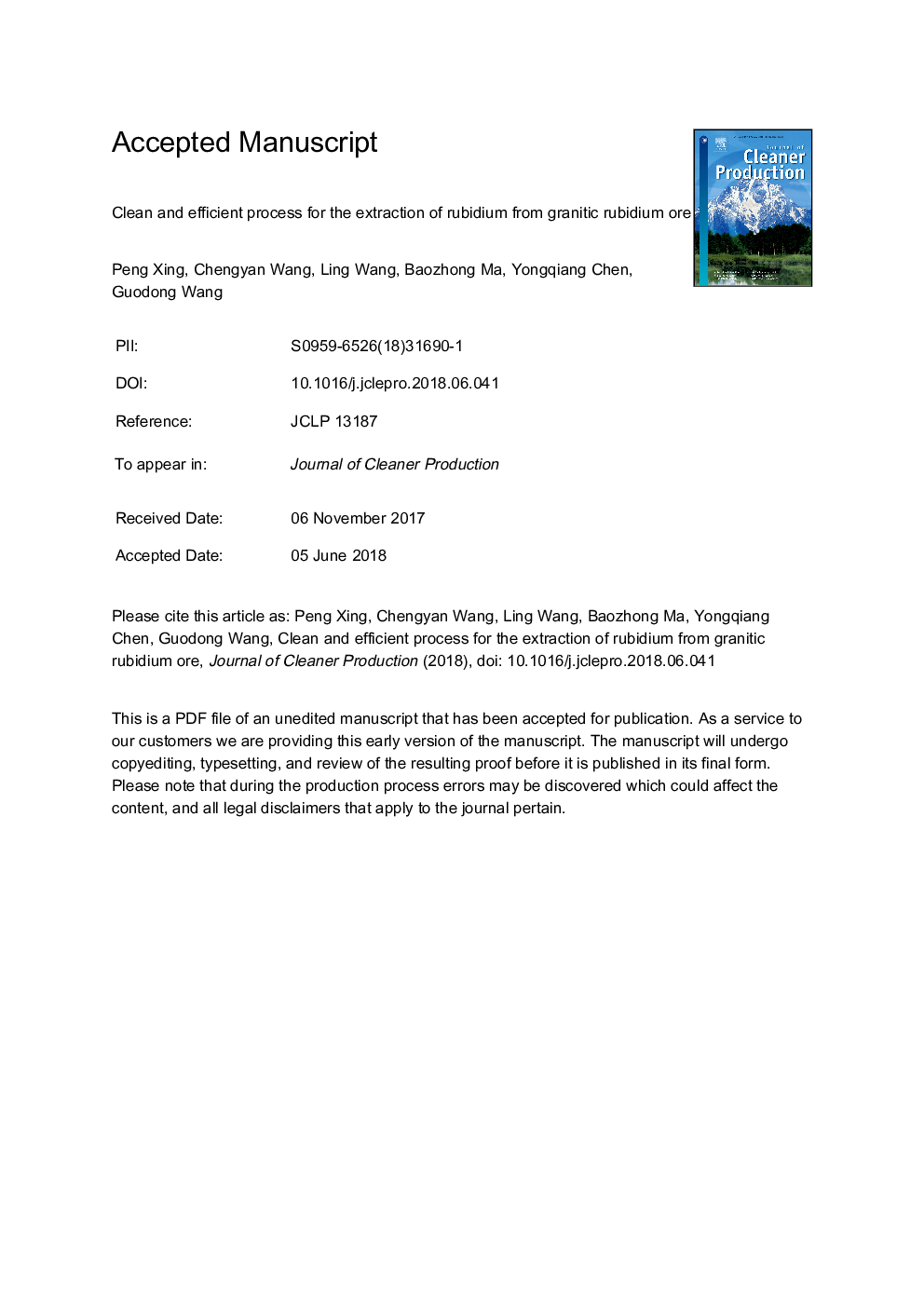| Article ID | Journal | Published Year | Pages | File Type |
|---|---|---|---|---|
| 8093712 | Journal of Cleaner Production | 2018 | 27 Pages |
Abstract
The extraction of rubidium from natural resources has attracted much attention due to its growing application in many fields. This paper presents a novel clean process for extracting rubidium from granitic rubidium ore. The process consists of alkaline leaching, desilication, and solvent extraction. The experiment results show that the leaching ratio of Rb can be greater than 95% at a leaching temperature of 230â¯Â°C, NaOH concentration of 200â¯g/L, particle size of 100 mesh, liquid/solid ratio of 10:1, leaching time of 1â¯h, and stirring rate of 500â¯rpm. The optimum conditions for the desilication were determined to be the temperature of 95â¯Â°C, mass ratio of CaO to SiO2 of 1.2, and reaction time of 1â¯h. The SiO2 precipitation under optimum conditions was up to 96.2%. Approximately 98% of Rb in desilication liquor was extracted using 1â¯mol/L 4-tert-butyl-2-(α-methylbenzyl) phenol (in xylene) in three stages at a phase ratio (O/A) of 3:1 for 1.5â¯min and more than 99% of Rb in loaded organic phase was stripped using 1â¯mol/L HCl in two stages at a phase ratio of 10:1. The raffinate of Rb can be sent to the leaching step again after the extraction of potassium to close the loop. The results of mineralogy research suggest that the rubidium-bearing micas and feldspar were altered to zeolite and cancrinite during the hydrothermal alkaline leaching, which contributed to the release of rubidium from ore. Compared with the existing processes, this process has the advantages of lower energy consumption and no wastewater/emission gas disposals. In addition, the solid wastes can be utilized as the value-added products.
Related Topics
Physical Sciences and Engineering
Energy
Renewable Energy, Sustainability and the Environment
Authors
Peng Xing, Chengyan Wang, Ling Wang, Baozhong Ma, Yongqiang Chen, Guodong Wang,
